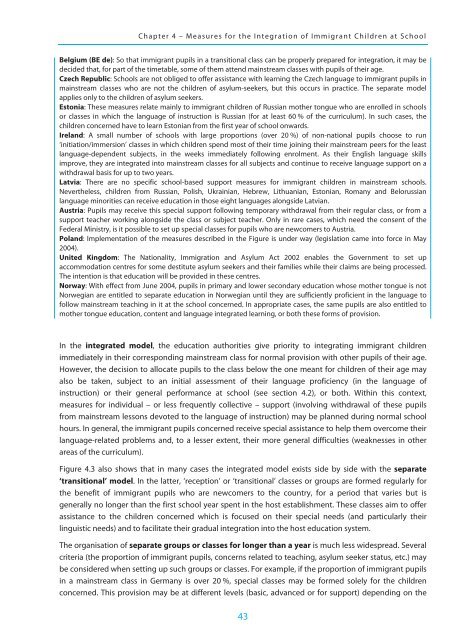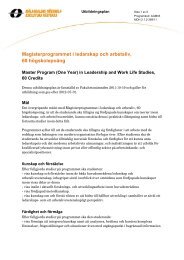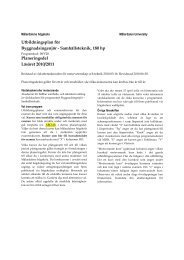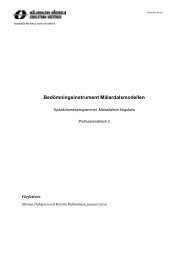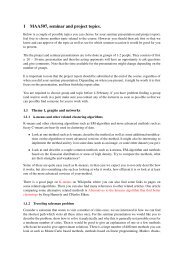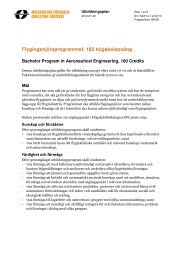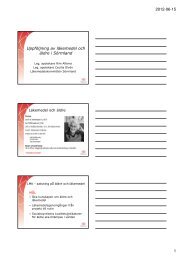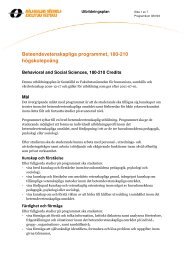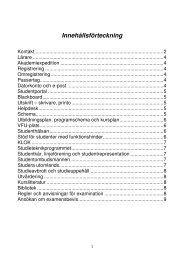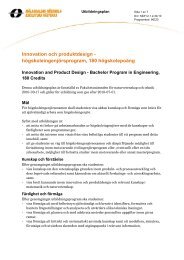Integrating Immigrant Children into Schools in Europe
Integrating Immigrant Children into Schools in Europe
Integrating Immigrant Children into Schools in Europe
Create successful ePaper yourself
Turn your PDF publications into a flip-book with our unique Google optimized e-Paper software.
Chapter 4 – Measures for the Integration of <strong>Immigrant</strong> <strong>Children</strong> at SchoolBelgium (BE de): So that immigrant pupils <strong>in</strong> a transitional class can be properly prepared for <strong>in</strong>tegration, it may bedecided that, for part of the timetable, some of them attend ma<strong>in</strong>stream classes with pupils of their age.Czech Republic: <strong>Schools</strong> are not obliged to offer assistance with learn<strong>in</strong>g the Czech language to immigrant pupils <strong>in</strong>ma<strong>in</strong>stream classes who are not the children of asylum-seekers, but this occurs <strong>in</strong> practice. The separate modelapplies only to the children of asylum seekers.Estonia: These measures relate ma<strong>in</strong>ly to immigrant children of Russian mother tongue who are enrolled <strong>in</strong> schoolsor classes <strong>in</strong> which the language of <strong>in</strong>struction is Russian (for at least 60 % of the curriculum). In such cases, thechildren concerned have to learn Estonian from the first year of school onwards.Ireland: A small number of schools with large proportions (over 20 %) of non-national pupils choose to run‘<strong>in</strong>itiation/immersion’ classes <strong>in</strong> which children spend most of their time jo<strong>in</strong><strong>in</strong>g their ma<strong>in</strong>stream peers for the leastlanguage-dependent subjects, <strong>in</strong> the weeks immediately follow<strong>in</strong>g enrolment. As their English language skillsimprove, they are <strong>in</strong>tegrated <strong><strong>in</strong>to</strong> ma<strong>in</strong>stream classes for all subjects and cont<strong>in</strong>ue to receive language support on awithdrawal basis for up to two years.Latvia: There are no specific school-based support measures for immigrant children <strong>in</strong> ma<strong>in</strong>stream schools.Nevertheless, children from Russian, Polish, Ukra<strong>in</strong>ian, Hebrew, Lithuanian, Estonian, Romany and Belorussianlanguage m<strong>in</strong>orities can receive education <strong>in</strong> those eight languages alongside Latvian.Austria: Pupils may receive this special support follow<strong>in</strong>g temporary withdrawal from their regular class, or from asupport teacher work<strong>in</strong>g alongside the class or subject teacher. Only <strong>in</strong> rare cases, which need the consent of theFederal M<strong>in</strong>istry, is it possible to set up special classes for pupils who are newcomers to Austria.Poland: Implementation of the measures described <strong>in</strong> the Figure is under way (legislation came <strong><strong>in</strong>to</strong> force <strong>in</strong> May2004).United K<strong>in</strong>gdom: The Nationality, Immigration and Asylum Act 2002 enables the Government to set upaccommodation centres for some destitute asylum seekers and their families while their claims are be<strong>in</strong>g processed.The <strong>in</strong>tention is that education will be provided <strong>in</strong> these centres.Norway: With effect from June 2004, pupils <strong>in</strong> primary and lower secondary education whose mother tongue is notNorwegian are entitled to separate education <strong>in</strong> Norwegian until they are sufficiently proficient <strong>in</strong> the language tofollow ma<strong>in</strong>stream teach<strong>in</strong>g <strong>in</strong> it at the school concerned. In appropriate cases, the same pupils are also entitled tomother tongue education, content and language <strong>in</strong>tegrated learn<strong>in</strong>g, or both these forms of provision.In the <strong>in</strong>tegrated model, the education authorities give priority to <strong>in</strong>tegrat<strong>in</strong>g immigrant childrenimmediately <strong>in</strong> their correspond<strong>in</strong>g ma<strong>in</strong>stream class for normal provision with other pupils of their age.However, the decision to allocate pupils to the class below the one meant for children of their age mayalso be taken, subject to an <strong>in</strong>itial assessment of their language proficiency (<strong>in</strong> the language of<strong>in</strong>struction) or their general performance at school (see section 4.2), or both. With<strong>in</strong> this context,measures for <strong>in</strong>dividual – or less frequently collective – support (<strong>in</strong>volv<strong>in</strong>g withdrawal of these pupilsfrom ma<strong>in</strong>stream lessons devoted to the language of <strong>in</strong>struction) may be planned dur<strong>in</strong>g normal schoolhours. In general, the immigrant pupils concerned receive special assistance to help them overcome theirlanguage-related problems and, to a lesser extent, their more general difficulties (weaknesses <strong>in</strong> otherareas of the curriculum).Figure 4.3 also shows that <strong>in</strong> many cases the <strong>in</strong>tegrated model exists side by side with the separate‘transitional’ model. In the latter, ‘reception’ or ‘transitional’ classes or groups are formed regularly forthe benefit of immigrant pupils who are newcomers to the country, for a period that varies but isgenerally no longer than the first school year spent <strong>in</strong> the host establishment. These classes aim to offerassistance to the children concerned which is focused on their special needs (and particularly theirl<strong>in</strong>guistic needs) and to facilitate their gradual <strong>in</strong>tegration <strong><strong>in</strong>to</strong> the host education system.The organisation of separate groups or classes for longer than a year is much less widespread. Severalcriteria (the proportion of immigrant pupils, concerns related to teach<strong>in</strong>g, asylum seeker status, etc.) maybe considered when sett<strong>in</strong>g up such groups or classes. For example, if the proportion of immigrant pupils<strong>in</strong> a ma<strong>in</strong>stream class <strong>in</strong> Germany is over 20 %, special classes may be formed solely for the childrenconcerned. This provision may be at different levels (basic, advanced or for support) depend<strong>in</strong>g on the43


